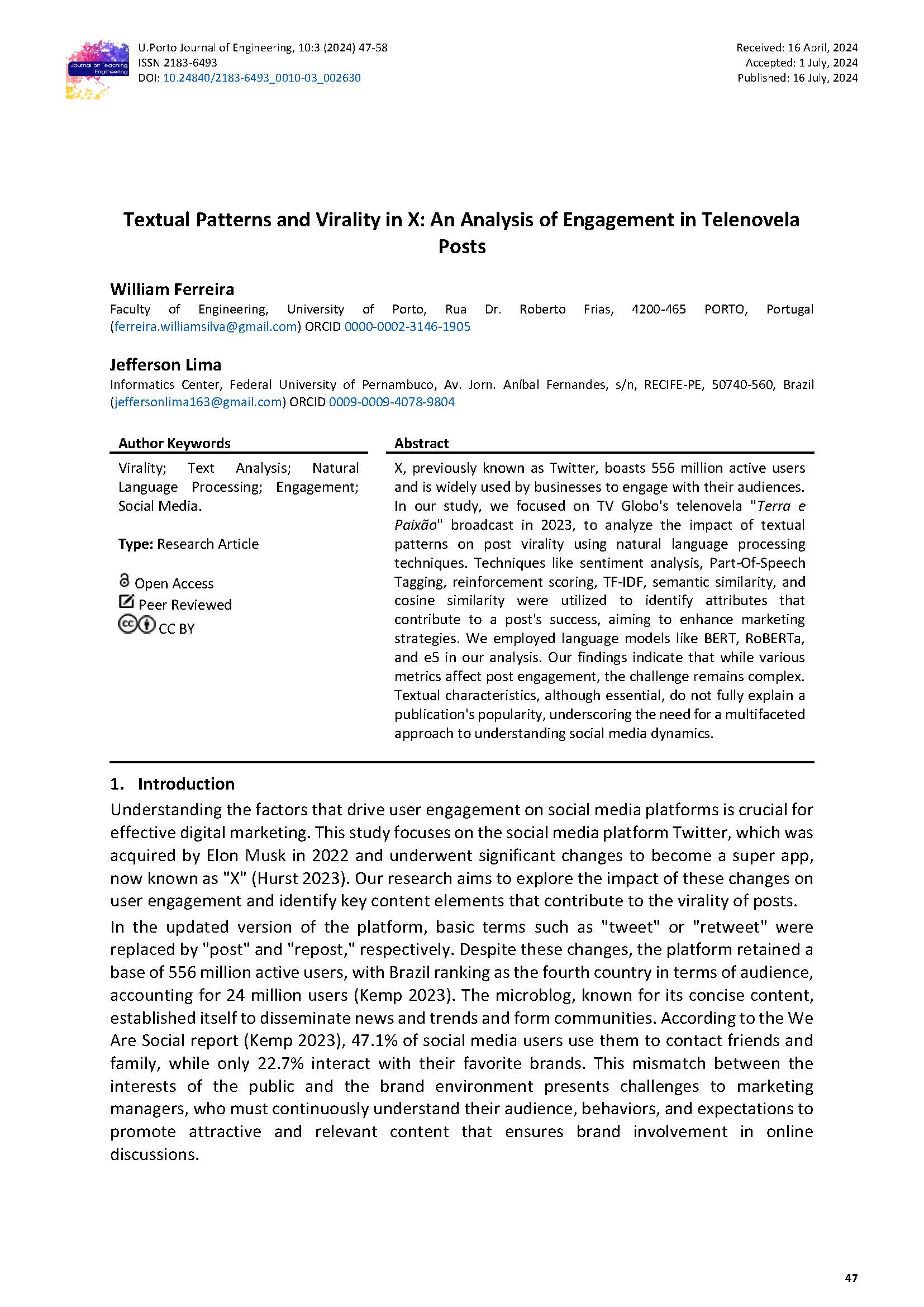Textual Patterns and Virality in X: An Analysis of Engagement in Telenovela Posts
Main Article Content
Abstract
X, previously known as Twitter, boasts 556 million active users and is widely used by businesses to engage with their audiences. In our study, we focused on TV Globo's telenovela "Terra e Paixão" broadcast in 2023, to analyze the impact of textual patterns on post virality using natural language processing techniques. Techniques like sentiment analysis, Part-Of-Speech Tagging, reinforcement scoring, TF-IDF, semantic similarity, and cosine similarity were utilized to identify attributes that contribute to a post's success, aiming to enhance marketing strategies. We employed language models like BERT, RoBERTa, and e5 in our analysis. Our findings indicate that while various metrics affect post engagement, the challenge remains complex. Textual characteristics, although essential, do not fully explain a publication's popularity, underscoring the need for a multifaceted approach to understanding social media dynamics.
Downloads
Article Details

This work is licensed under a Creative Commons Attribution 4.0 International License.
Authors who publish with this journal agree to the following terms:
- Authors retain copyright and grant the journal right of first publication with the work simultaneously licensed under a Creative Commons Attribution License that allows others to share the work with an acknowledgement of the work's authorship and initial publication in this journal.
- Authors grant the journal the rights to provide the article in all forms and media so the article can be used on the latest technology even after publication and ensure its long-term preservation.
- Authors are able to enter into separate, additional contractual arrangements for the non-exclusive distribution of the journal's published version of the work (e.g., post it to an institutional repository or publish it in a book), with an acknowledgement of its initial publication in this journal.
- Authors are permitted and encouraged to post their work online (e.g., in institutional repositories or on their website) prior to and during the submission process, as it can lead to productive exchanges, as well as earlier and greater citation of published work (See The Effect of Open Access).

